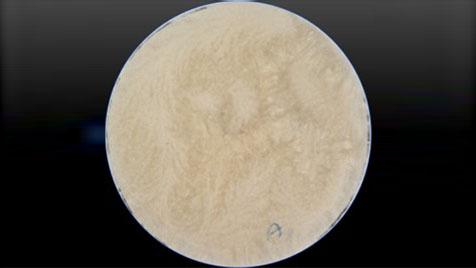
Credit: Adapted from ACS Sustainable Chemistry & Engineering 2022, DOI: 10.1021/acssuschemeng.2c00168
Washington, D.C. (July 20, 2022)—While acoustical treatments can always be found in modern recording studios and concert venues, as any installation pro will tell you, sound absorption is a crucial factor in virtually every part of modern life. Noise mitigation is necessary everywhere, from offices to public spaces to shopping centers and far, far more. While sound absorption helps make the modern world bearable, however, it often comes at the cost of the environment, as many acoustical treatments are made with non-sustainable materials. Now researchers in India have begun experimenting with biodegradale sound absorbers derived from seaweed, as detailed in “Agar-Based Composite Films as Effective Biodegradable Sound Absorbers,” published this week in the journal ACS Sustainable Chemistry & Engineering.
Recognizing that many acoustic panels are made from petroleum products in turn derived from crude oil or shale gas, researchers have increasingly started to explore more renewably sourced and biodegradable sound-absorbing alternatives. The drawback is, however, that panels made from plant-derived materials can be difficult to produce and aren’t that effective within the necessary frequency ranges.
HOW-To: Acoustic Treatment for HOWs
With that in mind, Chindam Chandraprakash and colleagues focused in on creating thin films of agar, a jelly-like material developed from seaweed, along with other plant-derived additives and varied both the thickness and porosity of the films. To test the agar-based materials, the researchers measured how well the films dampened sounds that ranged from a bass hum to a shrill whine.
To create a uniform environment for the tests, the researchers opted to build a sound tube where a speaker was placed at one end, and the test film was fitted over the other end. Meanwhile, in the middle were a number of microphones, used to measure both the speaker’s sound and the sound reflected off the film.
Ultimately, the researchers discovered that porous films made with the highest concentrations of agar had the greatest sound-absorbing qualities and, to the team’s definitions, performed similarly to traditional acoustic foams. With that initial pass completed, the researchers are now looking at ways to modify the agar films to give them other desirable properties, such as flame resistance, and plan to explore other biologically derived film materials as well.







